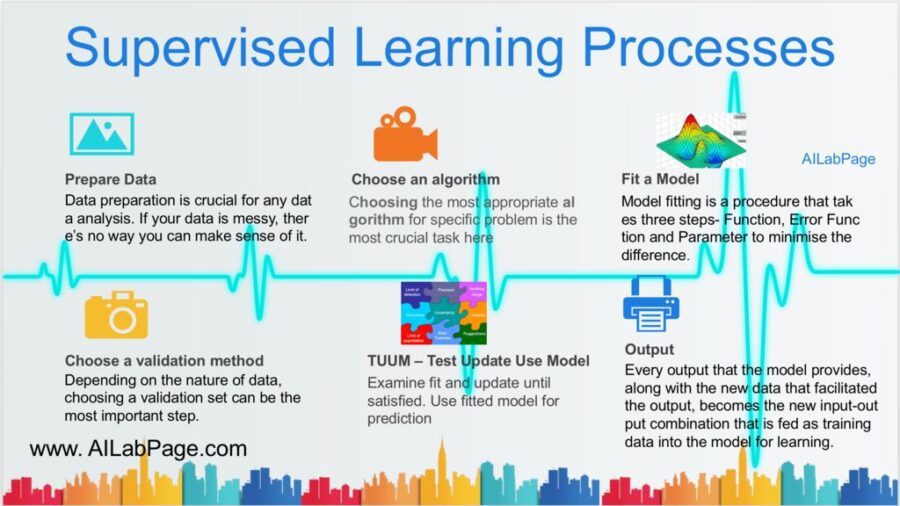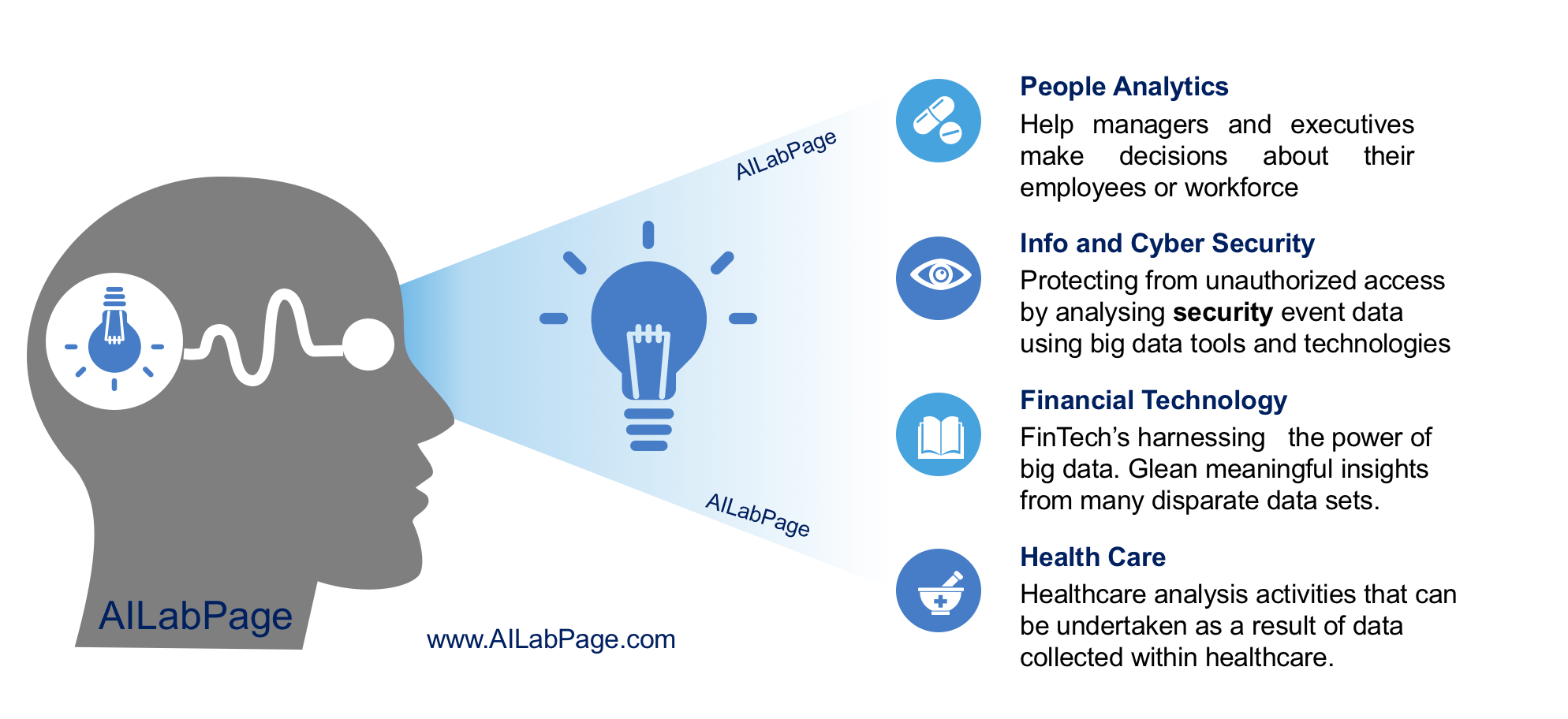Supervised learning – A blessing we have in this machines era. It helps to depict inputs to outputs. It uses labelled training data to deduce a function which has set of training examples. The majority of practical machine learning uses supervised learning as on date.
What is Machine Learning
AILabPage defines Machine Learning as “A focal point where business, data and experience meets emerging technology and decides to work together“.
Machine learning is also a subset of Artificial Intelligence. ML borrows principles from computer science and statistics which is a graphical branch of mathematics.
It instructs an algorithm to learn for itself by analysing data. The more data it processes, the smarter the algorithm gets. Until only recently even though foundation was laid down in 1950; ML remained largely confined to academia. Sadly it’s becoming more accessible to developers as their tool. What we need is simply a MLaaS (Machine Learning as a Service)for every one.
Machine Learning Types
The difference between supervised, unsupervised and semi-supervised learning. Lets see one liners as below

Machine Learning – Some Use Cases
ML have strengthen organizations and awarded success with each type of learning. Making the right choice of technique to be use for business problem requires a strong understanding of the field. Evaluating which conditions are best suited for each approach is another task. Types of machine learning algorithms i.e. MLAlgos and which one to be used when is extremely important to know.

The goal of the task and all the things that are being done in the field and put you in a better place to break down a real problem and design a machine learning system.
What is SML – Supervised Machine Learning?
As per Wiki – In supervised learning, each example is a pair consisting of an input object (typically a vector) and the desired output value (also called the supervisory signal).
SML through historic data set is able to hunt for correct answers, and the task of the algorithm is to find them in the new data. Supervised Machine Learning is
- Is a task of deducing function from labeled training data.
- Making predictions based on evidence in the presence of uncertainty
- Identifying patterns in given data with adaptive algorithms
In supervised machine learning, each example is sorted in a pair consisting of an input object and a desired output value. An algorithm in this domain analyses the training data and produces an inferred function, which can be used for mapping new examples. The training data consist of a set of training examples.
How Supervised Machine Learning Works
The process for Supervised Machine Learning is basically a two-step process as below.
- Learning – Learn a model using the training data or train model using training data.
- Testing – Test the model using unseen test data to assess the model accuracy
The detailed steps for supervised learning processes are included but not limited though as directed in below graphics

In summary we can say comfortably in supervised learning; learning comes from known label data to create a model than predicting target class as output for the given input data. Supervised learning is also known as data mining task and its used for inferring a function from labeled training data.
Lets take an apple as example for this learning process. Lets assume we have our fruit basket and we call it as our fruit basket. Now to pick an apple from the our basket below process at high level would work perfect.
- From our fruit basket we collect data like size, colour, weigh, skin type, and shape etc of all the fruits.
- After collecting the data we start classifications
- If size is Big, colour is red, the shape is rounded shape with a depression at the top and bottom put it in set-1
- If skin type is smooth and shiny on set-1 fruits; put it in set-2
- Set-2 data can now be comfortably labelled as apple will be put in apple group.
Real Life Business Uses Cases for Supervised Learning
Supervised learning model makes predictions based on evidence in the presence of uncertainty. Some of the use cases for supervised learnings are depicted in below picture.
- People analytics
- Internet of things
- Info and Cyber Security
- Asset Management
- Stock Exchange
- Marketing & Sales
- Health Care
- FinTech
Supervised Learning Algorithms:
The main job of any supervised learning algorithm is to analyse the training data as first step. In second step deduce the function which can used for depict new examples. It has “labeled” data for creating predictive models by using either type of ml algorithms as mentioned below. It provides outputs typically in one of two forms.
- Regression outputs are real-valued numbers that exist in a continuous space.
- Classification outputs, on the other hand, fall into discrete categories.
As shown above problems under classification (binary or multi-class) and regression come under supervised learning. Some of the algorithms are mentioned as below.
- Linear regression
- Logistic Regression
- Polynomial regression
- SVM for regression
- Decision trees
- Random forest
- Support vector machine (SVM)
- Naive Bayes
- k-Nearest Neighbours
Focused Use Cases Under Supervise Learning
Here will focus mainly on 4 main problems that should be considered for supervised learning. In below use cases its simple and easy to collect data, label data and make predictions with accuracy. AILabPage did small survey among artificial intelligence experts to outline some facts around machine learning for personal use and blog sharing. While there were only 23 respondents out of 30 who voted to confirm what was evident already.
Below use cases came out as focus areas.

-
People analytics
Analytical tools are being embedded into day-to-day decision-making. A new paradigm shift in HR on People Analytics has brought revolutionary transformation.
- Existing Task Force– Almost all respondent agreed this is extremely important for companies to invest in order to understand their people better. Performance measurement, retention and predicting who is on outward path.
- New Task Force – Recruitment remains the no-1 area as of now to understand work force planning, compensation bench marking and detecting suspicious items in CV’s
-
Info and Cyber Security
Threat hunters or threat analysts roles came up recently. Skilled resources are now upgrading their skills and knowledge in areas like network administration or network engineering with Artificial Intelligence and Machine Learning blend.
- Here machines are able to learn and gain knowledge of internal and external information vulnerabilities and able to do mapping against real-world cyber attacks.
